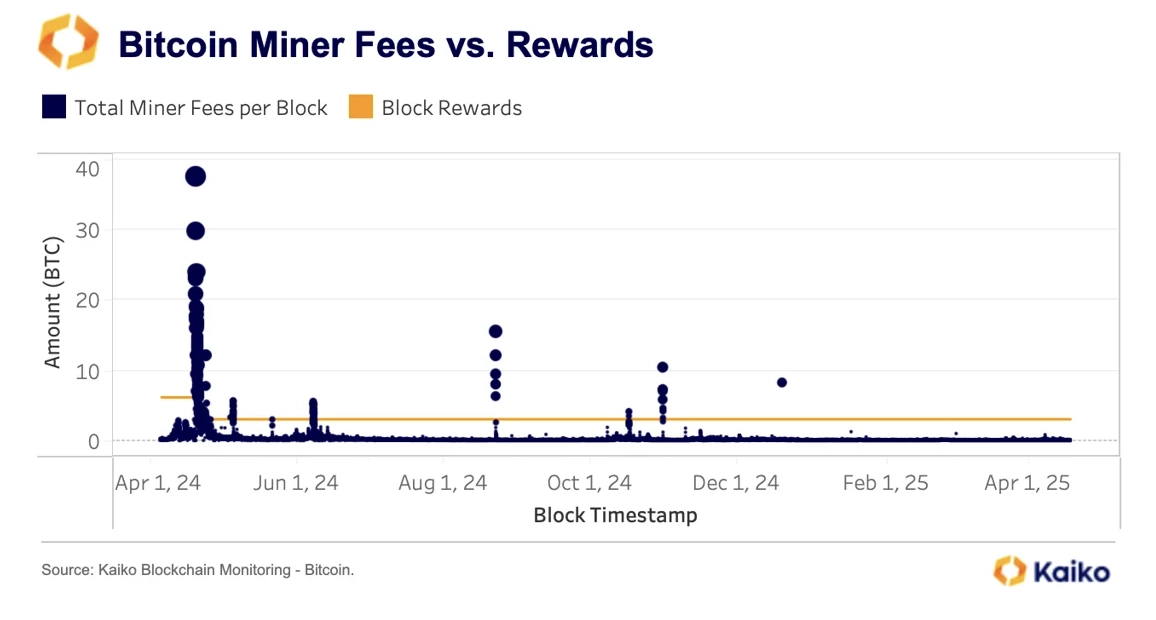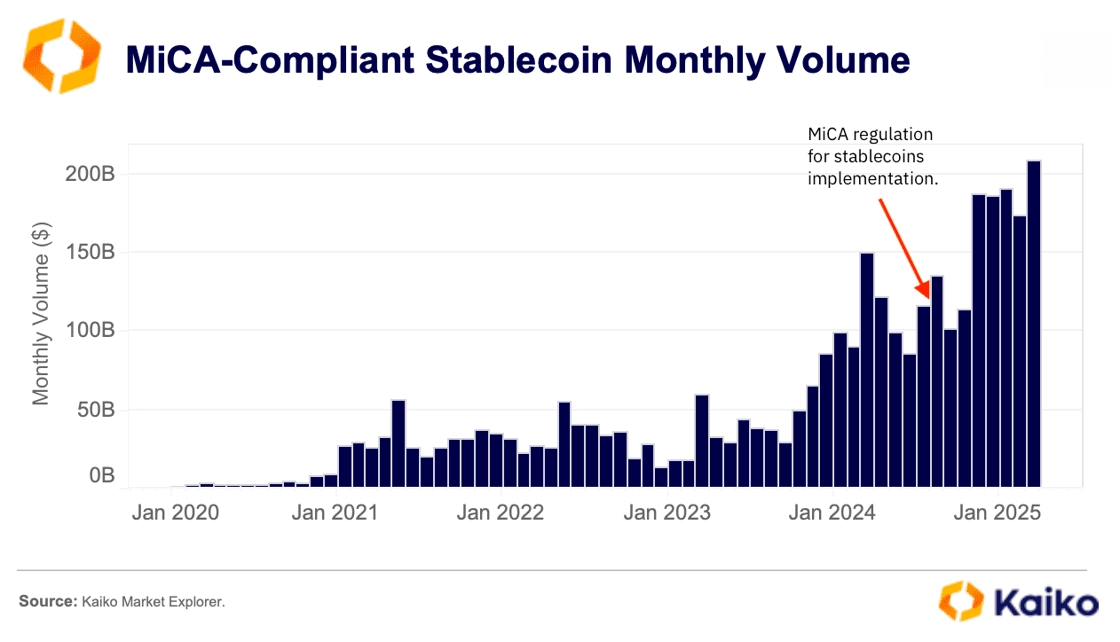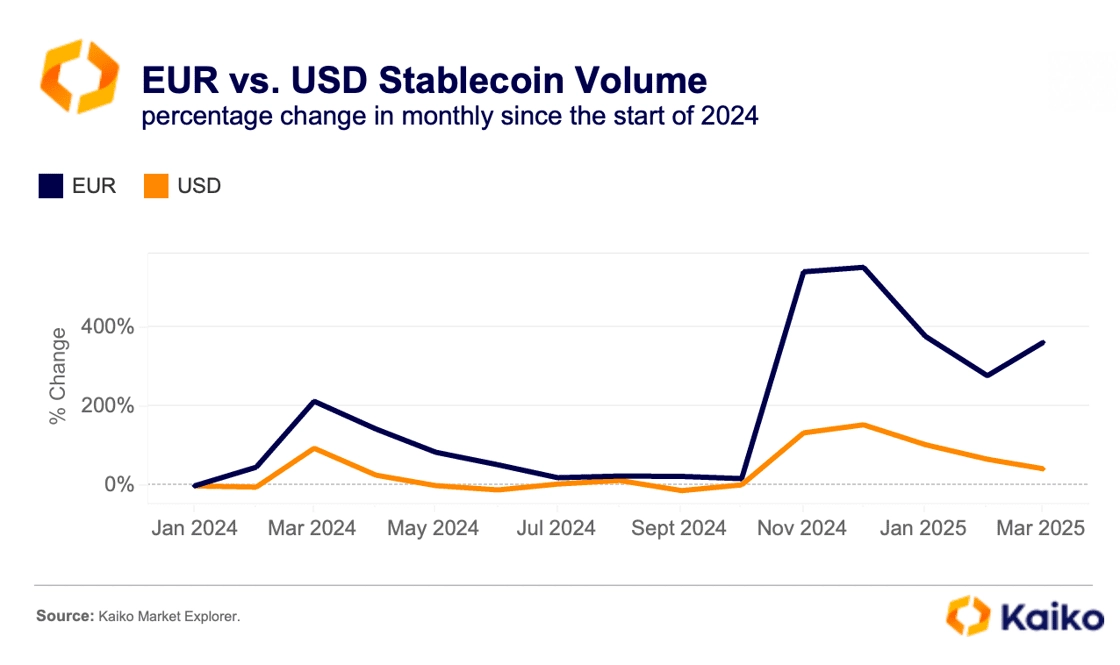Trend of the Week
Bitcoin’s halving anniversary: This time was different.
One year after the 2024 halving, Bitcoin is trading between $80,000 and $90,000, making this the weakest post-halving performance on record in terms of percentage growth. After previous halvings, Bitcoin typically rallied strongly within 12 months: following the 2012 halving, BTC’s price saw an explosive 7,000% surge, while the 2016 and 2020 cycles posted gains of 291% and 541%, respectively. So far, the 2024 cycle has fallen short of that trend.
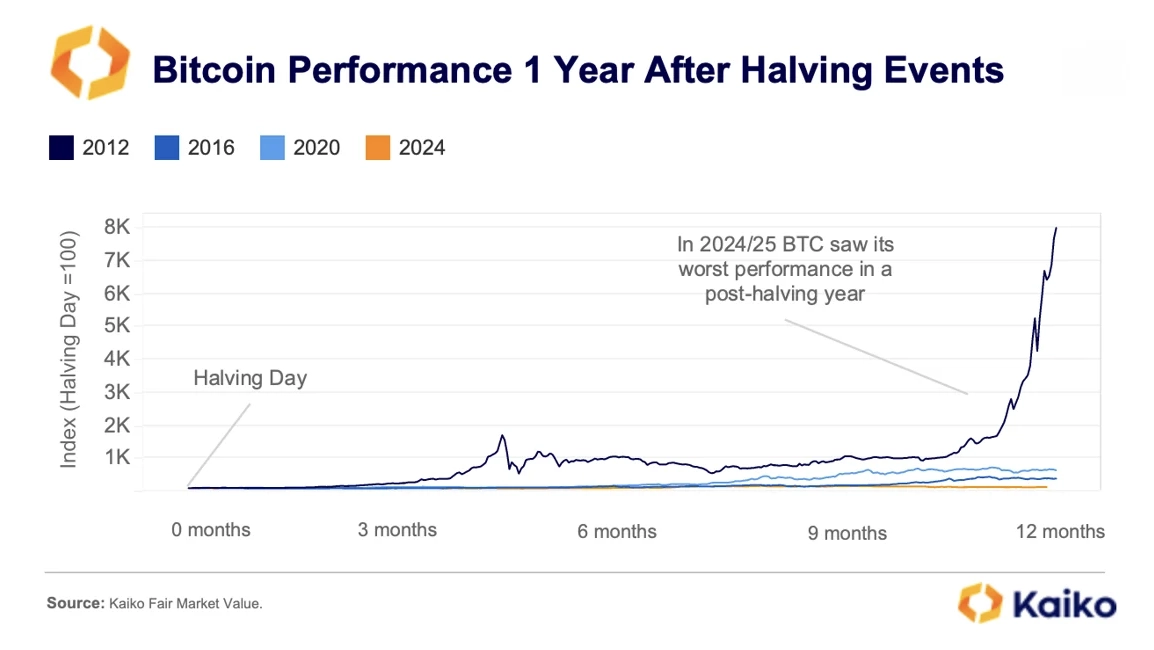
Excluding 2012 for visibility, the price momentum that typically materializes nine months post-halving has been notably absent.
This lackluster performance has coincided with increased macroeconomic uncertainty. In Q1 2025, global trade tensions intensified and risk-off sentiment rose sharply. During the six months following the halving, the Economic Policy Uncertainty Index (FRED) averaged 317. In contrast, the index averaged 107 in 2012, 109 in 2016, and 186 in 2020 over the same post-halving periods.
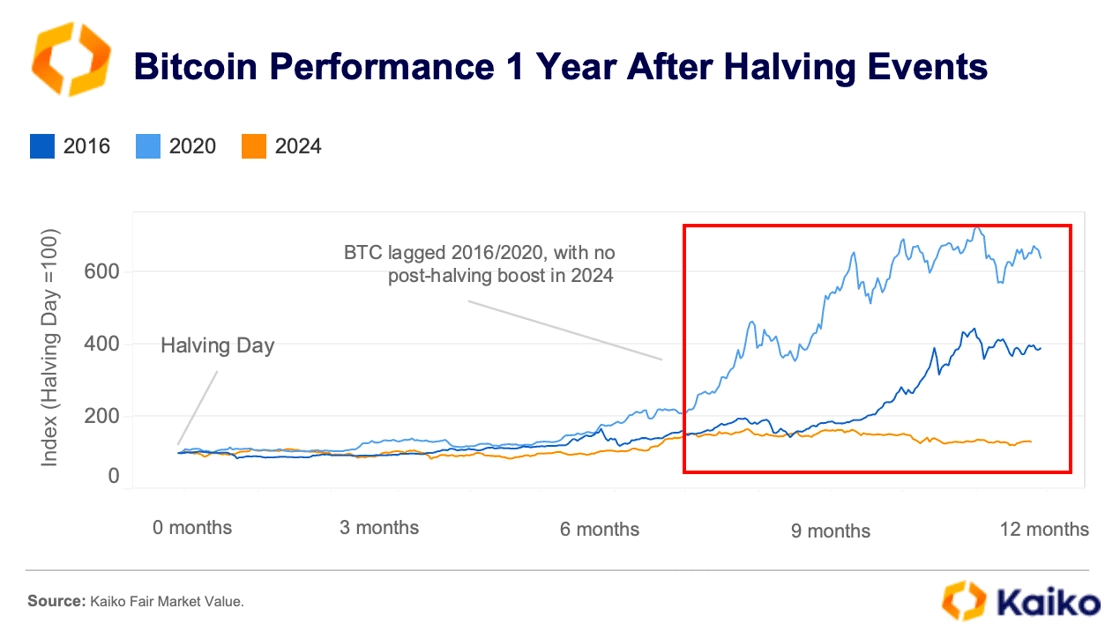
However, regulatory clarity around digital assets in the U.S. is beginning to emerge, which could help reduce uncertainty and restore investor confidence in crypto markets in the coming months.
Despite ongoing market uncertainty, Bitcoin’s price behavior has changed significantly in 2024. Its 60-day price volatility has dropped sharply—from over 200% in 2012 to barely 50% today. As Bitcoin matures, it is now more likely to deliver stable, though potentially more subdued, returns compared to earlier cycles.
Meanwhile, miner dynamics present a more nuanced picture. In April, Bitcoin’s network hash rate reached an all-time high, indicating intensified competition, either from an influx of new miners or the deployment of more efficient hardware. However, when the hash rate rises without a matching increase in Bitcoin’s price, miner profit margins are squeezed, highlighting a growing disconnect between network security and price performance.
Miner revenue is derived from both block rewards and transaction fees. Following the 2024 halving, transaction fees briefly soared to record highs, largely due to the launch of the Runes protocol, which increased demand for block space by enabling the issuance of fungible tokens. However, since then, BTC miner fees have declined and stayed mainly below the block reward (3.125 BTC).
Miner fee growth has been notably subdued since the fourth halving. With block rewards now reduced by half, steady on-chain transaction activity is essential to keep miners incentivized—particularly if the price does not increase rapidly enough. In the year since the 2024 halving, just over 8,000 BTC have been paid in transaction fees, compared to 37,000 BTC in fees during the first year after the third halving.
Data points
MiCA-compliant stablecoins volume hits all-time high.
Stablecoins regulated under the EU’s Markets in Crypto-Assets (MiCA) regulation have demonstrated notable resilience amid broader market volatility, outpacing non-compliant counterparts in volume growth.
Combined monthly volumes for Circle’s USDC and EURC, Banking Circle’s EURI, and Societe Générale’s EURCV more than doubled since the start of 2024, reaching an all-time high of $209 billion in March 2025.
USDC continues to lead in nominal volume among MiCA-compliant stablecoins. However, euro-denominated stablecoins have gained significant momentum: From January 2024 to March 2025, EUR-backed stablecoins saw a 363% increase in monthly volumes, compared to a 43% rise for their USD-backed counterparts.
Despite this acceleration, retail adoption of EUR stablecoins remains constrained by high transaction fees and limited liquidity. For example, Coinbase charges substantially higher fees on EURC conversions than on USDC, which may limit broader use.
ETH staking Indices: Coming soon?
BTC dominated headlines in 2024 following the rip-roaring success of spot ETFs in the U.S. last year. These funds even overshadowed ETH ETFs, which also attracted impressive inflows. The lack of staking in ETH funds partly explains the lower level of interest in these products.
That could all change in 2025, as issuers look to amend previous filings with the new U.S. Securities and Exchange Commission. And it’s not just ETH that stands to benefit—there’s a whole host of proof-of-stake assets vying for ETF approval, many offering much higher staking rewards than ETH.
Indeed, SOL has consistently offered higher rewards, and the first spot products for this asset were launched last week in Canada, with staking rewards included. Demand for these funds has been healthy, with Cathie Wood’s Ark Invest purchasing shares in 3iQ’s SOLQ ETF, which already has nearly CAD $100 million in assets under management.



